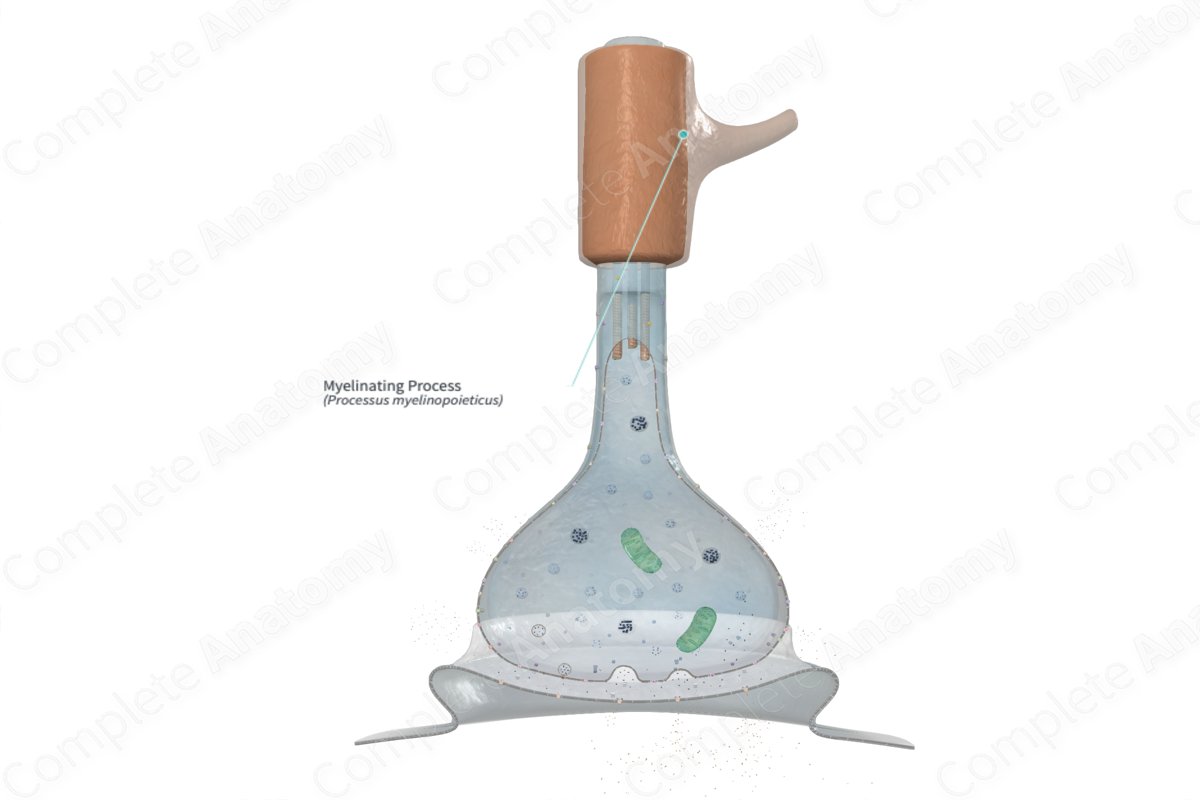
Quick Facts
Myelinating processes are projections of the surface membrane of oligodendrocytes that fan out and coil around the axon of many neurons to form myelin sheaths in the white matter (Dorland, 2011).
Structure and/or Key Features
The myelin sheath is produced by oligodendrocytes in the central nervous system (CNS) and by Schwann cells in the peripheral nervous system (PNS).
The formation of the myelin sheath in the CNS is more complex than it is in the PNS. Oligodendrocytes produce long processes that extend towards an axon and wraps its plasmalemma around the axon in concentric layers. In some regions of the CNS, oligodendrocytes can enclose up to fifty axons in separate myelin sheaths (Mancall and Brock, 2011). The area of the axon covered by the myelin sheath is called the internodal segments.
There is no cytoplasm remaining in the outer layer of the myelin sheath and there is no external lamina, therefore, the myelin sheaths of adjacent axons may be in contact (Ross and Pawlina, 2006).
Function
The myelin sheath forms an insulating layer around the axon and prevents leakage of the electrical current from the axon. In addition, the myelin sheath increases the speed by which nerve impulses are conducted along the axon and makes the propagation of nerve impulses more energy efficient (Marieb, Wilhelm and Mallatt, 2012).
The myelin sheath also functions to maintain an ideal ionic environment that is suitable for the conduction and propagation of the action potentials (Mescher, 2013).
References
Dorland, W. (2011) Dorland's Illustrated Medical Dictionary. 32nd edn. Philadelphia, USA: Elsevier Saunders.
Mancall, E. L. and Brock, D. G. (2011) Gray's Clinical Neuroanatomy: The Anatomic Basis for Clinical Neuroscience. Elsevier Health Sciences.
Marieb, E. N., Wilhelm, P. B. and Mallatt, J. (2012) Human Anatomy. fifth edn.: Benjamin Cummings.
Mescher, A. (2013) Junqueira's Basic Histology: Text and Atlas. 13th edn.: McGraw-Hill Education.
Ross, M. H. and Pawlina, W. (2006) Histology: A text and atlas. Lippincott Williams & Wilkins.
